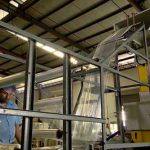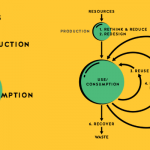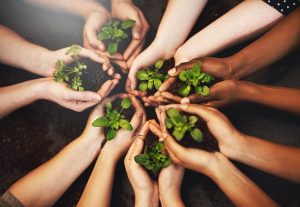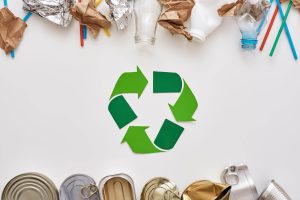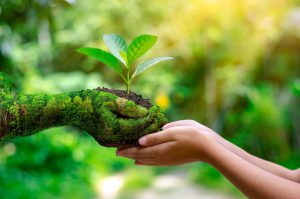Plastic Packaging Environmental Impact: There are a lot of discussions about plastic packaging and its impact on the environment these days.
Industries are now facing tremendous public pressure to go green.
Communities are growing more concerned about plastic usage and its effects on the world.
Historically, plastics existed in the 19th century to help communities make available useful everyday products.
Inventors and chemists were already developing everyday household items such as combs from brittle. The early form of plastic was first called Parkesine.
It was later renamed celluloid, due to the plant cellulose from which it was sourced.
However, as time progressed, plastic gained a lot of bad press due to its effect on the environment. In 2016, there wasa Greenpeace petition for a UK-wide plastic microbead ban that hit 365,000 signatures within four months.
Eventually, this became the most significant environmental petition ever presented to its government.
Even royal members like Prince Charles have given enthusiastic speeches about the dangers of plastic packaging environmental impact, while celebrities like Kim Kardashian have posted on Instagram about the “plastic crisis,” and also claim to have given up straws.
Yet despite the social plastic packaging environmental impact, plastic is still an essential need—especially beyond the consumer’s world. There are crucial packaging processes before any product reaches its end users. Plastic packaging helps safeguard and preserve goods.
At the same time, its lightweight characteristics reduce weight during transits, saves fuel costs, and minimizes greenhouse gas discharges.
Without the aid of plastic, food will not be as affordable as it should be. The freshness in commercial packaging would also be questionable.
Manufacturing and logistics companies would have to restructure the security and protection of their goods.
Not only that, but even consumers will also see more damage in their everyday grocery shopping items and there may be health-related issues on the rise too.
Let us look at some of the general misconceptions of plastic packaging usage and its impact on the environment.
Misconception #1: Plastic Packaging Is A Threat to The Environment
Yes, plastics are artificially created with (synthetic) chemicals. It is man-made and does not seem to go well with nature.
However, if one were to remove the use of plastic from their life forever, they would only reduce 0.4 percent of their own carbon emissions.
As for plastic waste in our ocean, statistically, plastic straws are found to account for 0.03% of total waste.
However, can we do away with plastic packaging when it helps us to protect our assets from our distribution centres to our endpoint?
Plastic is also the main element that helps keep food safe and preserved for consumption.
It protects and keeps food fresh during the supply process until it reaches the end shoppers. Ultimately it benefits consumers in terms of health and their own safety.
Therefore, the issue does not solely lie with plastic being a threat, but how plastic waste is managed until another solution is found.
Misconception #2: Paper Packaging Will Replace Plastic
While this might sound like an excellent idea, there is more than meets the eye.
Producing paper, especially for packaging purposes, requires significantly more cost and resources involved.
Compared to plastic, paper requires four times as much energy and three times the amount of water for its production. Its dense properties also make it heavier and bulkier, so more fuel and logistic arrangements are needed just for transport.
To clearly illustrate this, paper requires seven trucks to move two million paper bags, whereas only one vehicle is needed to deliver the same amount of plastic ones.
The other disadvantage of paper is its bulk.
Though it breaks down faster as compared to plastic, it does take a lot of space, which would not be an excellent sustainable idea for the environment and community living.
A study done by Professor David Tyler from the University of Oregon in America concluded that the carbon footprint of a plastic bag is less than a paper or cotton bag.
This is due to its water usage and pollution factors. He also discovered that increased paper usage causes deforestation, air pollution, water pollution, and waste.

Misconception #3: Plastic Is Just “Use and Throw”
Usually, when people talk about “use and throw,” they are referring to single-use plastics.
These plastics include products like straws, wrappers, bottles, and bags. These items are usually discarded quickly after the first use.
However, it is a very different scenario in the industrial trade process. Plastic usage is essential when it comes to packaging and safeguarding the quality of goods.
Without plastic, there will be many damaged items and material wastages along the way. This increases production costing, which would affect pricing and profit generation.
Instead of single “use and throw” usage, find ways how plastics can be creatively reused. This will help reduce plastic packaging environmental impact on our earth.
Change your consumer’s perception of repurposing your product packaging in ways they can reuse them in their daily life.
In this way, plastic packaging will not immediately end up in some rubbish landfill but would be more valuable to end-users.
Plastic, as for now, is cheap, durable, and easy to transport. It makes perfect sense for commercial usage and decreases carbon footprints for plastic packaging environmental impact.
Until another alternative is found, plastic packaging would still be the best way to support this process.
Misconception #4: Plastics Cannot Be Recycled
We are used to seeing plastic as litter.
However, it has a longer lifespan than expected.
Durable plastic can be recycled at the end of use, typically for a maximum of six times. However, its fibers lessen each time it is recycled.
This means after going through several cycles, it is no longer recyclable.
Before it has reached its usability lifespan, it is usually repurposed as bottle caps, hardy containers, or integrated with fabric materials for clothing wears.
Therefore, it is essential to use the right type of plastic so that it can be recycled to be readapted to serve more usages.
Misconception #5: Plastics will be banned in the future
Since plastic is deemed to be harmful, it would be banned in the future, right?
However, this would be challenging as plastic is still widely used in packaging because of its low cost and efficiency.
There seems to be no suitable material able to replace it yet.
Here at Thong Guan, we are now researching feedstock recycling solutions and introducing bio-based alternative raw materials for renewal-based plastic so that we can play our part in protecting our environment.

Solution – Playing Your Part
In conclusion, what then could be the solution to plastic packaging to reduce its environmental impact?
The move to reduce plastics can only speed up when all players in the industry, including brand owners, manufacturers, retailers, and even consumers, do their part to eventually replace the use of plastic.
Investments in research and alternative materials can help businesses restrategize plans for alternative plastic packaging. It advocates the discovery and usage of other methods for packaging and brings positive changes to the environment too.
It is essential to know and choose the right type of plastic packaging to use. Here is a list of sustainable-made plastic materials to consider:
- Bioplastics: Made from natural raw materials such as tall oil and corn starch
- Biodegradable Plastics: Made from traditional petrochemicals. They are engineered to disintegrate more quickly
- Eco/recycled Plastics: These are plastics made from recycled plastic materials rather than raw petrochemicals.
Minimize your own plastic footprint in your business practices and encourage others to follow too. There is no better place to start than your own premises.
It demonstrates to others that you are responsible and have a clear stand on your part in nature conservation.
Plastic packaging is not going away anytime soon because it still brings so much benefit to the industrial world.
Even though there may be a lot of misconceptions about it, we need to acknowledge that plastic is not just an isolated problem that we can exclude from our businesses.
Exploring and using alternative materials, waste management, and the willingness to change makes tomorrows difference

